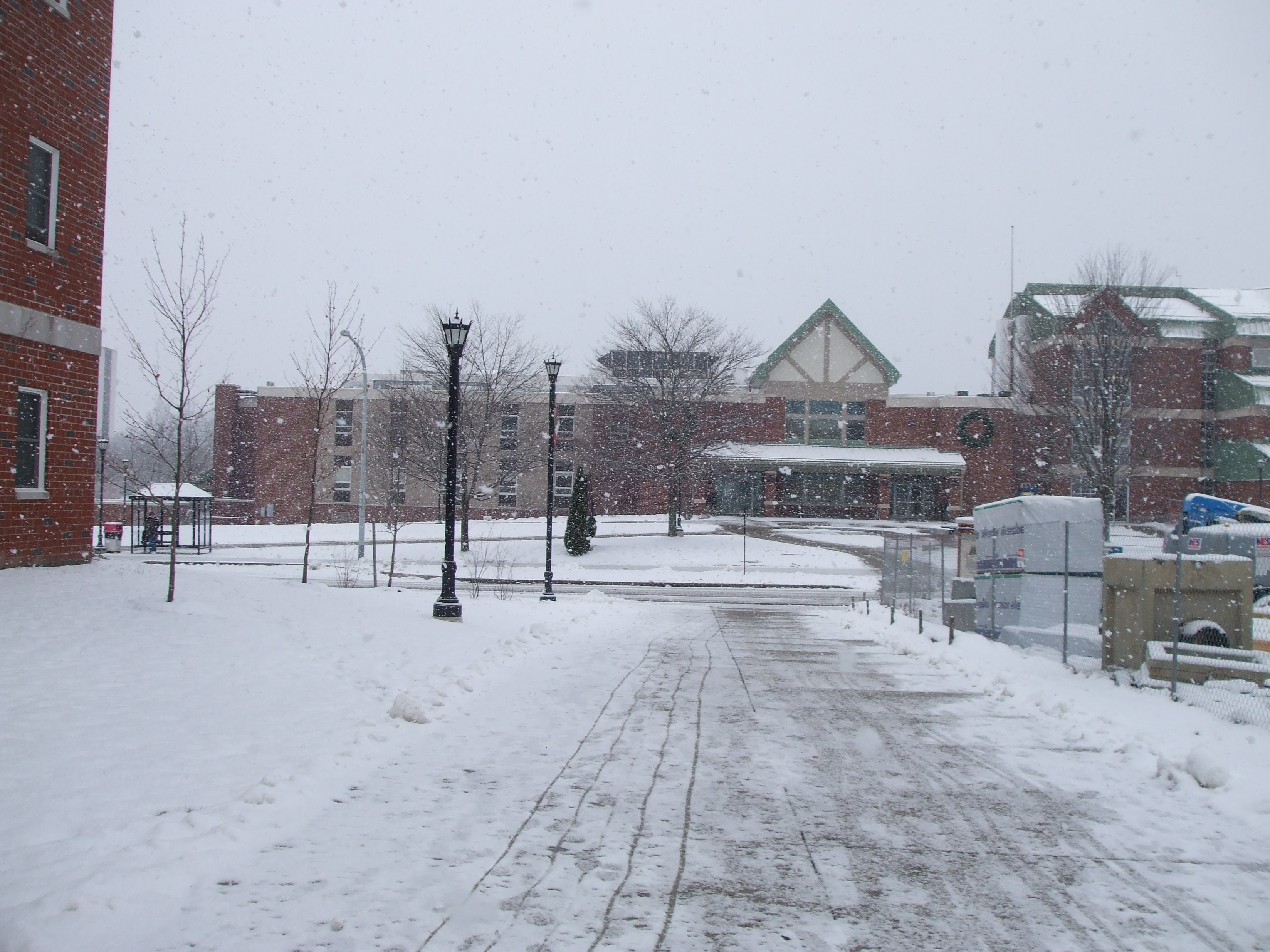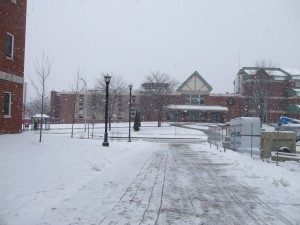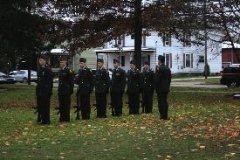Students gathered in front of Baron-Forness Library on “Trayvon Tuesday”, April 17, to remember the death of Trayvon Martin, a 17-year-old who was killed in Sanford, Florida.
“Justice in general has always been served, but is it really happening when it’s supposed to be?” asked Marlan Jones, a sophomore communications major with a minor in political science, who was leading the event.
According to a New York Times article, it happened like this: It was a dark, rainy night, on February 26, when Martin entered the Retreat at Twin Lakes on his way back to the house he was staying at in Sanford, Florida.
A neighborhood watch had been created in August 2010 due to earlier episodes of robberies, said the article. The guidelines were that the volunteers for the watch should not possess police authority, should not have any firearms, and should only be the eyes and the ears for the police force. George Zimmerman, 28, was chosen for the job.
That night, Zimmerman had a licensed, 9-millimeter handgun and when he spotted Martin walking past his vehicle, he became suspicious and dialed 911, according to the New York Times.
There aren’t many details about what exactly happened during those next six minutes from 7:11 to 7:17 p.m., but what the newspapers were able to find out was that Zimmerman told Martin to stop moving and Martin started running, so Zimmerman set off in pursuit.
What happened after that is unclear. Some say that Martin punched Zimmerman first, while others say that Zimmerman tackled Martin, but no matter how it started, both men ended up wrestling on ground, according to the article.
Someone screamed for help and no one is really sure who it was, but then a single shot was fired and then silence filled the night.
When Zimmerman took it upon himself to chase after Martin, he stepped out of the guidelines that were set for the neighborhood watchmen, according to the New York Times.
Despite the charges filed against Zimmerman on April 11, one student who attended the on-campus remembrance said he was not convinced there was enough evidence to find Zimmerman guilty.
The thing is, said Jones, you’re innocent until proven guilty; however, it seems like you’re guilty until proven innocent.
The Stand Your Ground Law “allows people to use deadly force when they feel a reasonable threat of death or serious injury,” according to a CNN article. In answer to the accusations that he fired too quickly instead of trying to reason with Martin, Zimmerman says that he shot in self-defense with no intention to kill.
Yet some students in the group were saying that because Martin didn’t stop when Zimmerman called for him to stop, he broke the law, so he was just as much in the wrong as Zimmerman was.
While all of suspicions and accusations are flying around in this case, one of the students in the group said that it’s great that more light is being shed on it, but at the same time, the family has to relive it every day and they really can’t seem to escape it.
It’s on the news every single day, so instead of being able to go through the grieving process and getting the chance to move on, it’s being drug out further than it would’ve been otherwise. The student said he could not even begin to imagine how hard it must be for the parents to see their son being talked about on TV.
Most of the students in the group were trying to view the story from both sides. Maybe Zimmerman felt that it was his duty to protect the neighborhood and had some motive for pulling the trigger that night, they said.
After the discussion, Jones asked for a moment of silence to be held to commemorate the death of Martin.
On April 23, Zimmerman was released from jail on a $150,000 bond. Later that day, his attorney, Mark O’Mara announced that Zimmerman would enter a not-guilty plea.
–Anna Tielmann (Taken from The Spectator Vol. III, Issue 25)




